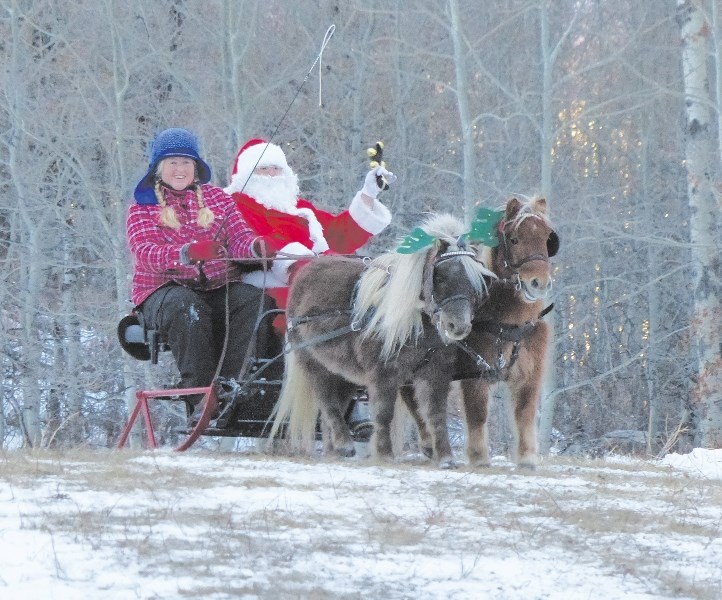In my last column, I outlined the first five tips for keeping your horses healthy during the winter — they included adequate movement, being with a group, time to graze or forage, provide mental stimulation and respecting your horses’ instincts.
Here come the rest of the tips:
The sixth tip is to create a safe environment. One significant problem we have in our Alberta winters is ice. Unless your horse is “sharp shod”, his traction is compromised when walking on ice or, even worse, ice with a thin skiff of snow.
In heavily travelled areas (like around the water trough) where ice becomes a problem, you can put out salt or sand or some other product that will give the horse traction (or get rid of the ice if that is an option).
Make sure your shelters are properly maintained — I had to go out and replace a board that a rambunctious horse “knocked off” the shelter as the offending board was laying on the ground with nails sticking up (could have been the cause of a serious foot injury). Insure your fences are intact — no loose boards (or wire) that could cause a problem.
The seventh tip is to “listen to your horse”. If there is a problem with how you are managing your horse in the winter, he will quite often be able to communicate to you that something is not right.
An unusual behavior is a good indicator that all is not well — for example a horse that becomes “cinchy” when that was never a problem before is telling you that something is not right. There may also be physical signs that the something is “off” — either the horse is too skinny or too fat. Both conditions require investigation to insure optimal health. Any change in movement might also be an indicator of a problem.
The eighth tip is to invest quality time with your horse — don’t just turn them out for the winter and ignore them. There are lots of things you can do — it can be as simple as just grooming or you can get fancier and do some new things in groundwork. You don’t have to saddle up or harness up every time you handle your horse. Your horse does need time off if you worked or competed a lot during the summer months but he still needs contact with you.
The ninth tip is one we have identified in previous columns — make sure you are providing good quality hay. It is no bargain if you provide the “cheap stuff” to your horse — you will pay in the long run with health problems caused by dusty, moldy, nasty hay. Your horse should be getting one to two per cent of their body weight every day in good quality hay. Some folks go so far as to provide free choice hay to try and simulate a more natural type of “grazing” behavior but, if you have easy keepers, this can be a problem.
The 10th tip is to exercise caution when feeding grains and supplements. The levels you fed these products when your horse was working or competing hard are not the same as when he is just out in the pasture enjoying his time off without the high energy expenditures. You may still want to provide supplements if your hay is not providing what the horse needs but watch out for how much grain is being consumed — it is not a kindness to feed lots of grain even if your horses’ lip smacking tells you that he really likes it.
So get on out there and enjoy the winter with your equine friends.




